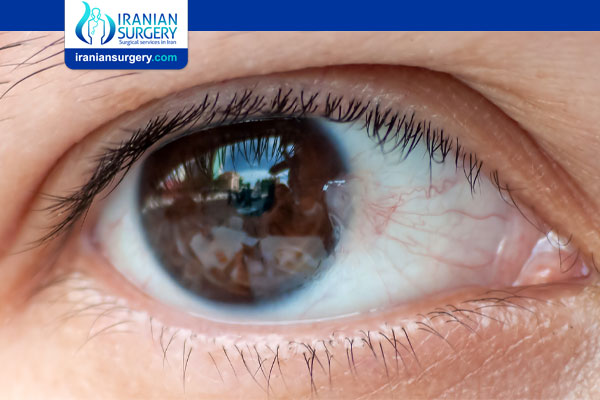Removing scar tissue from cornea

Removing Scar Tissue from Cornea
What is Corneal Scarring?
The cornea is the outermost layer of the eye. This clear layer of tissue looks like a smooth, dome-shaped piece of glass. By blocking irritating debris and controlling the way light enters the eye, your cornea helps to protect your eyes and focus your vision. The cornea is resilient and can typically heal from minor abrasions. However, major corneal damage can result in a corneal scar.
What is Corneal Scar Tissue?
Corneal scar tissue can be defined as any opacity on or within the corneal surface. Healthy corneas are transparent and allow light to pass through to the retina, unobstructed. Corneas with scar tissue, however, can cause distortion or complete vision obstruction, depending on the severity.
Causes of Corneal Scar Tissue
May be caused by injury to the cornea (abrasion, laceration, burns, or disease); depending on the degree of scarring, vision can range from a blur to total blindness. Surface abrasions, although extremely painful, heal transparently (do not leave scars). Deeper abrasions and ulcerations/lacerations result in a loss of cornea tissue, which is replaced by scar tissue. Scars left from burns depend on the type and depth of burn: boiling water or a curling iron leave superficial scarring; acids or alkalines cause deeper damage, unless neutralized immediately. Scarring from disease, usually an inflammation, is usually the result of a proliferation of new blood vessels into the clear cornea, to assist in the healing process. Diseases which cause vascularization include herpes simplex, syphilis, and keratitis.
What are the Symptoms of Corneal Scar Tissue?
Corneal scars can be extremely painful, but we are here to help. Common symptoms of corneal scarring include:
. Pain
. Blurred vision
. A burning or scratching sensation in your eye
. Feeling like something is in your eye
. Sensitivity to light
. Red eyes
. Eyelid swelling
. Excessive tearing
How Is a Corneal Scar/Opacity Diagnosed?
A detailed eye exam performed by your eye doctor can identify the cloudiness or scarring. The cause of the opacity may be readily apparent, or it may be difficult to tell what caused it.
How Is a Corneal Scar/Opacity Treated?
Prevention is always the easiest and most efficient way to prevent scarring. Conditions that notoriously lead to scarring (corneal infection or ulcer) may be treated with immune-suppressing steroid eye drops after the infection is resolved to minimize or prevent scar formation.
Once a scar or opacity has become a part of the cornea, your doctor may recommend treatment if it affects vision. If the scar makes the surface irregular and distorts the eye’s focusing ability, your doctor may recommend specialty contact lenses. This restores a smooth focusing surface to the cornea. These lenses typically work best for scars not located in the center of your vision.
If scarring involves the center of your vision, your doctor may recommend that it be removed. For central scars, surgical options performed by a skilled corneal surgeon include superficial keratectomy (SK), deep anterior lamellar keratoplasty (DALK), Descemet’s membrane endothelial keratoplasty (DMEK), and penetrating keratoplasty (PK).
. SK is used for opacities in the cornea’s outermost layer, the epithelium. The corneal epithelium replaces itself every week, so after removing such opacities, the cornea will regrow this layer and may look relatively normal within weeks. SK is not a true transplant in that it just removes unhealthy epithelium so that a healthy epithelial layer can regrow. Sometimes, we recommend removing a peripheral superficial opacity if it threatens to grow towards the center of the cornea. With this strategy, a patient can have a problem solved with an SK before it becomes more central or deeper in the cornea which could require a transplant.
. DMEK, DALK, and PK are true corneal transplants. Each of these procedures are used to remove and replace opaque tissue in different corneal layers. Generally, your surgeon will want to only replace the layer that is sick and leave any healthy tissue behind. DMEK is far less invasive than DALK or PK. Because of its lower risks, your surgeon will have a lower threshold to offer DMEK and leave DALK and PK as a last resort.
About Iranian Surgery
Iranian surgery is an online medical tourism platform where you can find the best ophthalmologists and eye surgeons in Iran. The price of Corneal Scaring Treatment in Iran can vary according to each individual’s case and will be determined by an in-person assessment with the doctor.
For more information about the cost of Corneal Scaring Treatment in Iran and to schedule an appointment in advance, you can contact Iranian Surgery consultants via WhatsApp number 0098 901 929 0946. This service is completely free.
Source:
https://insightcompleteeyecare.com/corneal-scar-tissue/
https://www.eyecenters.com/cornea-and-conjunctiva-louisville/corneal-scaropacity/
10 common questions about Removing scar tissue from cornea
[kkstarratings]

